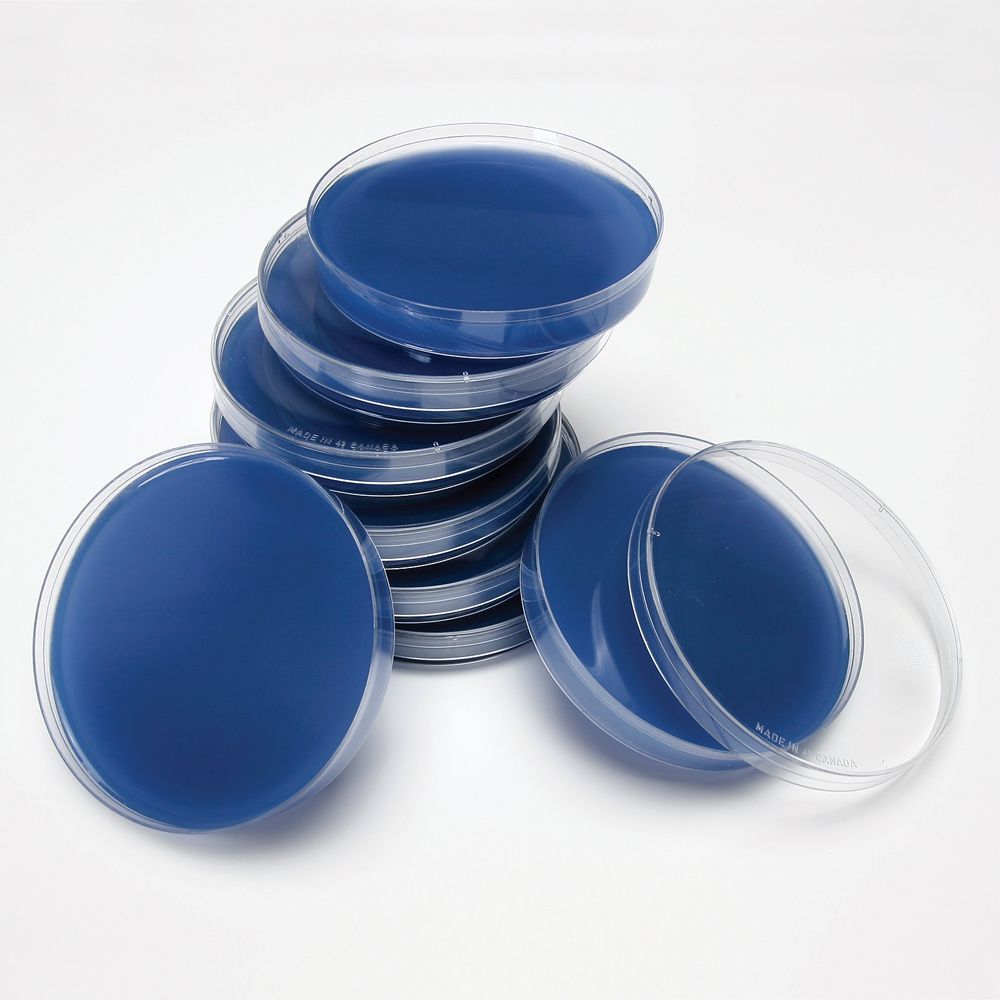My Cart
Your Shopping Cart is currently empty. Use Quick Order or Search to quickly add items to your order!

In this lab, students culture two species of bacteria on agar medium that contains an emulsion of plant oils and the dye, sprit blue, which forms a complex with the triglycerides of the oils and gives an opaque blue color to the agar. Colonies of bacteria that can secrete lipase, an enzyme that hydrolyzes triglycerides, develop a light area or “halo” in the surrounding medium, due to the diffusion of lipase into the medium and the resultant breakdown of the oil/ spirit blue complex. Colonies of bacteria that do not secrete lipase do not develop the halo.
This activity assumes that students have previously worked with bacteria and are familiar with sterile technique. It also assumes that they know how to streak plates. If this is not the case, we recommend that students complete the activities described in our “Introduction to Sterile Technique” LabSheet before beginning this activity.
Bacillus subtilis plate culture (154922)
Escherichia coli plate culture (155067)
Spirit Blue Agar, Prepared Media Plates (821428)
Bunsen burners or alcohol lamps
disinfectant (e.g., 70% ethanol, Lysol®, bleach solution)
Optional Materials
Tube cultures (154921 and 155065) can be substituted for the plate cultures. If using tube cultures, students must flame the mouth of the culture tube before inserting the inoculating loop and again after withdrawing it. Each workstation also will need a test tube rack for holding the tube cultures. See our Techniques for Studying Bacteria and Fungi manual for more detail on the proper handling of tube cultures.
If you have an autoclave, you can work with Dehydrated Media (787160).
This activity requires that students work with bacterial cultures and open flames. They should use sterile technique at all times and wear appropriate safety equipment. All work surfaces should be wiped down with disinfectant before and after the lab. All students should wash their hands before and after the lab. Cultures remaining at the end of the lab should be destroyed by autoclaving or by being flooded with disinfectant overnight before proper disposal.
Ensure that students understand and adhere to safe laboratory practices when performing any activity in the classroom or lab. Demonstrate the protocol for correctly using the instruments and materials necessary to complete the activities, and emphasize the importance of proper usage. Use personal protective equipment such as safety glasses or goggles, gloves, and aprons when appropriate. Model proper laboratory safety practices for your students and require them to adhere to all laboratory safety rules.
Students can work individually or in pairs.
Set up workstations for inoculating the plates. Each station should have the following materials:
bacterial cultures
Bunsen burner or alcohol lamp
inoculating loop
Set up separate workstations for the spirit blue agar plates, each equipped with wax pencils for marking the plates.
Incubate Bacillus subtilis at 30°C and Escherichia coli at 37°C. If you must incubate them in the same incubator, incubate at the lower temperature. If you do not have an incubator, the plates can be incubated at room temperature. Examine them for growth at 24-hour intervals. The plates should be ready for use 2 or 3 days after inoculation.
Optional: The lab can be a stand-alone activity or it can be done in conjunction with our “Bacterial Growth on MacConkey Agar,” “Bacterial Hydrolysis of Starch,” and “Bacterial Hydrolysis of Casein” LabSheets to give a broader view of the biochemical diversity found within bacteria. The following kits explore the topic in even greater depth: Bacterial Fermentation Kit (154710), Bacterial Biochemical Identification Kit (154715), and Enteric Biochemical Detective Kit (154717).
Record your observations of the growth and appearance of the two bacteria on spirit blue agar.
Bacillus subtilis: Heavy growth; distinct halo
Escherichia coli: Heavy growth; no halo (There may be some lightening of color, but no halo. Some strains of E. coli are lipase positive.)
Which, if either of the bacteria, secretes lipase?
Bacillus subtilis secretes lipase.